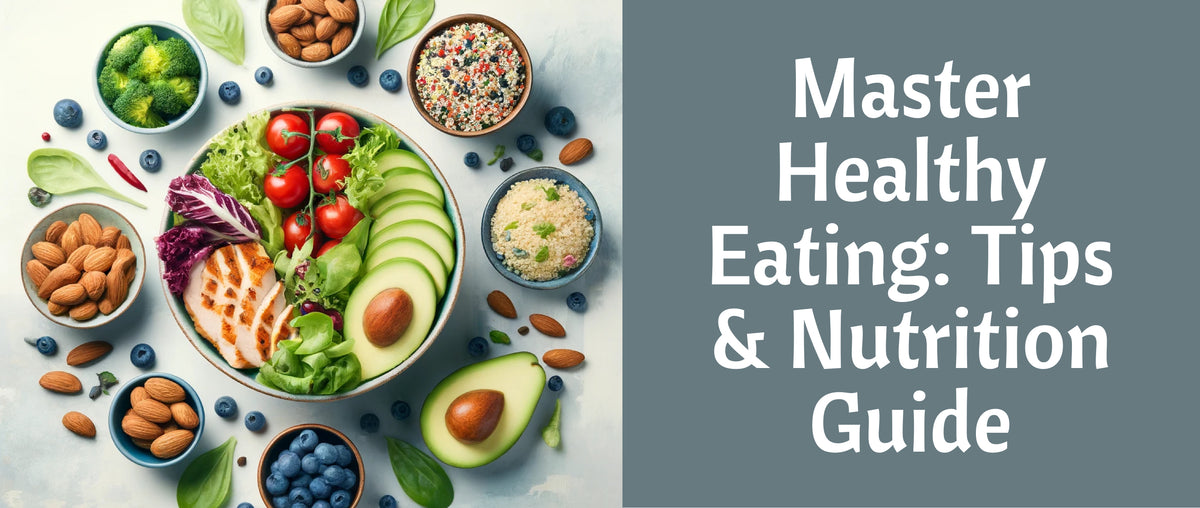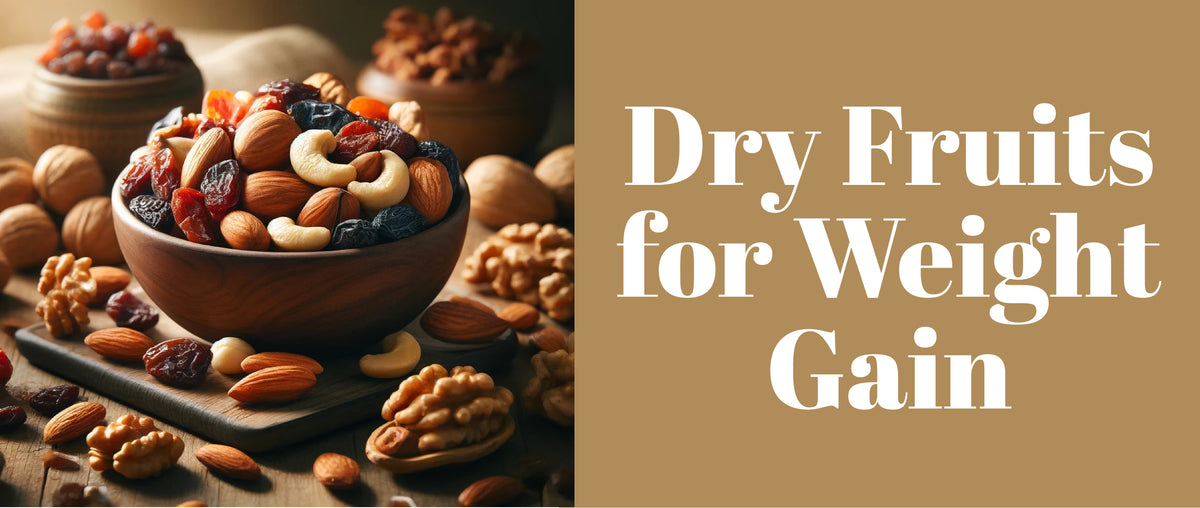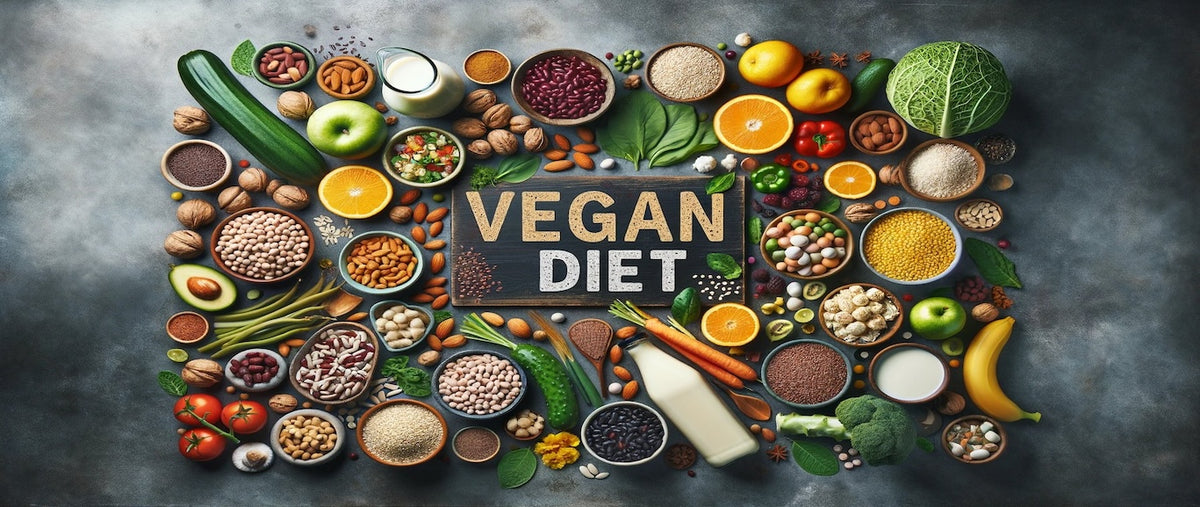Healthy Fiber Foods
Dietary fiber, often referred to as roughage, is an essential part of a balanced diet. Unlike other food components, such as fats, proteins, or carbohydrates, which your body breaks down and absorbs, fiber isn't digested by your body. Instead, it passes relatively intact through your stomach, small intestine, and colon and out of your body.
Fiber is commonly found in vegetables, fruits, legumes, and whole grains. It’s essential for maintaining good digestive health and can also help in managing weight, lowering cholesterol levels, and reducing the risk of diabetes and heart disease. Incorporating healthy fiber foods into your diet is crucial for overall well-being.
Key Takeaways
- Healthy fiber foods play a significant role in maintaining digestive health.
- They help in managing weight, lowering cholesterol levels, and reducing the risk of various diseases.
- Common sources include vegetables, fruits, legumes, and whole grains.
Types of Fiber
Dietary fiber is categorized into two main types: soluble fiber and insoluble fiber. Both types are beneficial for your health, but they work differently in your body.
Soluble Fiber
Soluble fiber dissolves in water to form a gel-like substance. It can help lower blood cholesterol and glucose levels. This type of fiber is found in:
- Oats: A versatile food that can be used in various recipes.
- Beans: Such as black beans, lentils, and chickpeas.
- Fruits: Including apples, citrus fruits, and berries.
- Vegetables: Such as carrots and Brussels sprouts.

Benefits of Soluble Fiber
- Lower Cholesterol Levels: Helps reduce the absorption of cholesterol into your bloodstream.
- Blood Sugar Regulation: Slows the absorption of sugar, which can help improve blood sugar levels.
- Digestive Health: Aids in softening stool and promoting regular bowel movements.
Insoluble Fiber
Insoluble fiber does not dissolve in water. It adds bulk to the stool and helps food pass more quickly through the stomach and intestines. This type of fiber is found in:
- Whole Grains: Such as whole wheat flour, wheat bran, and brown rice.
- Nuts and Seeds: Including almonds, flaxseeds, and chia seeds.
- Vegetables: Such as cauliflower, green beans, and potatoes.
Benefits of Insoluble Fiber
- Digestive Health: Helps prevent constipation and promotes regular bowel movements.
- Weight Management: Increases feelings of fullness, which can help control appetite and support a weight gain diet plan.
- Prevents Diverticular Disease: Reduces the risk of developing small pouches in the colon (diverticulosis).
Incorporating a mix of both soluble and insoluble fibers is crucial for a healthy diet. These fibers work together to provide maximum health benefits, supporting everything from digestion to disease prevention.
Benefits of High Fiber Foods
Incorporating high fiber foods into your diet offers numerous health benefits. Here are some key advantages:
Improved Digestion
Fiber aids in maintaining bowel health. It helps prevent constipation by adding bulk to the stool and promoting regular bowel movements. This is especially beneficial for those on a weight gain diet plan who might experience changes in digestion.
Lower Cholesterol Levels
Soluble fiber, found in foods like oats and beans, can help lower blood cholesterol levels. By binding with cholesterol particles, it helps remove them from the body, thus supporting heart health.
Blood Sugar Regulation
Fiber, particularly soluble fiber, slows down the absorption of sugar and helps improve blood sugar levels. This is crucial for managing diabetes and preventing blood sugar spikes after meals.
Weight Management
High fiber foods tend to be more filling than low fiber foods, which means you’re likely to eat less and stay satisfied longer. This can be particularly beneficial in a healthy eating regimen and for those seeking the best foods for weight loss.
Reduced Risk of Certain Diseases
A diet rich in fiber is associated with a lower risk of developing various conditions, including heart disease, type 2 diabetes, and certain types of cancer. Fiber’s role in improving overall digestive health and reducing inflammation contributes to these protective effects.
Supports Muscle Recovery
Fiber-rich foods, such as whole grains and legumes, also provide essential nutrients that aid in Muscle Recovery. They supply vitamins, minerals, and antioxidants that support overall health and recovery after exercise.
Top Fiber-Rich Foods
Fruits
- Apples: A medium-sized apple with skin provides about 4.4 grams of fiber.
- Bananas: One medium banana contains about 3.1 grams of fiber.
- Berries: Strawberries, raspberries, and blackberries are high in fiber. For example, one cup of raspberries contains 8 grams of fiber.
- Oranges: One medium orange provides about 3.1 grams of fiber.
Vegetables
- Broccoli: One cup of cooked broccoli contains about 5.1 grams of fiber.
- Carrots: A cup of raw carrots provides about 3.6 grams of fiber.
- Beets: One cup of boiled beets contains about 3.8 grams of fiber.
- Artichokes: One medium artichoke provides about 10.3 grams of fiber.
Legumes
- Lentils: One cup of cooked lentils contains about 15.6 grams of fiber.
- Black Beans: A cup of cooked black beans provides about 15 grams of fiber.
- Chickpeas: One cup of cooked chickpeas contains about 12.5 grams of fiber.
Whole Grains
- Oats: One cup of cooked oatmeal contains about 4 grams of fiber.
- Quinoa: A cup of cooked quinoa provides about 5 grams of fiber.
- Brown Rice: One cup of cooked brown rice contains about 3.5 grams of fiber.
Nuts and Seeds
- Chia Seeds: One ounce (about 2 tablespoons) of chia seeds provides 10.6 grams of fiber.
- Flaxseeds: One tablespoon of whole flaxseeds contains about 2.8 grams of fiber.
- Almonds: One ounce of almonds provides about 3.5 grams of fiber.
Fiber in Processed Foods
Processed foods can also be a source of fiber, especially when fortified. Here’s how fiber is incorporated into processed foods:
Overview of Fiber Fortified Foods
- Cereals: Many breakfast cereals are fortified with fiber. Look for those with at least 5 grams of fiber per serving.
- Breads: Whole grain and multigrain breads often contain added fiber.
- Snack Bars: Fiber enriched snack bars can be a convenient way to boost your fiber intake on the go.
Benefits of Fiber Fortified Foods
- Convenience: Fiber fortified foods provide an easy way to increase your fiber intake without significant changes to your diet.
- Digestive Health: Regular consumption of fiber fortified foods can help maintain digestive health.
- Versatility: These foods are available in various forms, making it easier to incorporate them into your daily diet.
Examples of Fiber Fortified Foods
- Breakfast Cereals: Look for brands like All Bran or Fiber One, which offer high fiber content.
- Whole Grain Breads: Brands like Ezekiel Bread and Dave's Killer Bread provide good fiber sources.
- Snack Bars: Brands like KIND Bars and Nature Valley offer fiber rich options.
Also Read
Fiber Supplements
If you find it challenging to get enough fiber from food alone, fiber supplements can be a helpful addition to your diet. Here’s a guide to understanding fiber supplements and their benefits:
Types of Fiber Supplements
- Powders: Mix these with water or add them to smoothies.
- Capsules: Convenient for on-the-go intake.
- Chewables: Easy to consume and often taste better than other forms.
Benefits and Usage
- Regularity: Fiber supplements can help maintain regular bowel movements.
- Weight Management: They can promote a feeling of fullness, helping with weight management and supporting a healthy diet.
- Cholesterol Management: Some fiber supplements, particularly those containing psyllium, can help lower cholesterol levels.
Recommended Fiber Supplements
- Psyllium Husk: Found in products like Metamucil, it’s effective for both constipation and diarrhea.
- Inulin: Found in products like FiberChoice, it’s a prebiotic that promotes gut health.
- Methylcellulose: Found in products like Citrucel, it’s non-fermentable, which means it’s less likely to cause gas and bloating.
How to Use Fiber Supplements
- Start Slowly: Gradually increase the amount to avoid gastrointestinal discomfort.
- Stay Hydrated: Drink plenty of water when taking fiber supplements to help them work effectively.
- Consult Your Doctor: Before starting any supplement, it’s a good idea to consult with a healthcare provider, especially if you have any underlying health conditions.
How to Incorporate More Fiber into Your Diet
Tips for Increasing Fiber Intake
- Start Your Day with Fiber: Choose a high fiber breakfast cereal or add fruits and nuts to your oatmeal.
- Add Veggies to Meals: Incorporate more vegetables into your lunch and dinner. Add them to soups, stews, and casseroles.
- Snack on Fruits and Vegetables: Keep fresh fruits, raw vegetables, and high fiber snacks handy for quick, healthy snacks.
- Choose Whole Grains: Opt for whole grain bread, pasta, and rice instead of their refined counterparts.
- Include Legumes: Add beans, lentils, and peas to salads, soups, and main dishes.
- Bake with Fiber: Use whole grain flours, add flaxseeds or chia seeds to your baking recipes.
- Try Fiber Supplements: If you find it hard to meet your fiber needs through food alone, consider taking a fiber supplement.
Cooking and Preparation Methods to Retain Fiber
- Keep the Skin On: Whenever possible, eat fruits and vegetables with their skins on to maximize fiber intake.
- Avoid Overcooking: Cooking vegetables too long can break down fiber. Light steaming or microwaving can help retain more fiber.
- Incorporate Raw Foods: Eating some vegetables and fruits raw can help you get more fiber.
Sample High Fiber Meal Plan
| Meal | Food Item | Fiber Content (grams) |
|---|---|---|
| Breakfast | Oatmeal with berries and flaxseeds | 10 |
| Snack | Apple | 4.4 |
| Lunch | Quinoa salad with black beans and veggies | 12 |
| Snack | Carrot sticks and hummus | 6 |
| Dinner | Grilled chicken with broccoli and brown rice | 8 |

Fiber and Hydration
Importance of Drinking Water with Fiber Intake
- Prevents Constipation: Fiber absorbs water, which helps to keep stool soft and bulky. Without sufficient water, fiber can lead to constipation.
- Aids Digestion: Water helps move fiber through the digestive system, promoting regular bowel movements.
Tips to Stay Hydrated
- Drink Water Regularly: Aim to drink at least 8 glasses of water a day. Increase this amount if you are physically active or live in a hot climate.
- Eat Water-Rich Foods: Include foods with high water content such as cucumbers, oranges, and strawberries.
- Carry a Water Bottle: Keep a reusable water bottle with you throughout the day to encourage regular sipping.
- Hydrate Before, During, and After Exercise: Ensure you are drinking enough water before, during, and after physical activity.
Potential Side Effects of Inadequate Hydration with High Fiber Intake
- Gas and Bloating: Without enough water, fiber can ferment in the gut, causing gas and bloating.
- Constipation: Insufficient water can make it difficult for fiber to move through the digestive system, leading to constipation.
- Stomach Cramps: Dehydration combined with high fiber intake can cause stomach cramps and discomfort.
By balancing your fiber intake with proper hydration, you can enjoy the full benefits of a high fiber diet without any adverse effects.
Fiber for Weight Loss
Incorporating high fiber foods into your diet can be a powerful strategy for weight loss. Here’s how fiber can aid in shedding those extra pounds:
How Fiber Aids in Weight Loss
- Promotes Fullness: High-fiber foods take longer to digest, which helps you feel full longer and reduces overall calorie intake. This is crucial for maintaining a healthy diet.
- Reduces Appetite: Fiber slows down digestion and regulates blood sugar levels, helping to curb hunger and prevent overeating.
- Low in Calories: Many high-fiber foods are naturally low in calories, making them ideal for those on a weight loss plan who need to balance calorie intake.
Best High-Fiber Foods for Weight Loss
- Vegetables: Leafy greens, broccoli, Brussels sprouts, and carrots are excellent choices.
- Fruits: Berries, apples, oranges, and pears are high in fiber and low in calories.
- Legumes: Beans, lentils, and chickpeas are rich in fiber and protein, making them great for satiety.
- Whole Grains: Oats, quinoa, brown rice, and whole grain bread can help you feel full and energized throughout the day.
- Nuts and Seeds: Almonds, chia seeds, and flaxseeds provide a good balance of fiber, protein, and healthy fats.
Sample High-Fiber Weight Loss Meal Plan
| Meal | Food Item | Fiber Content (grams) |
|---|---|---|
| Breakfast | Smoothie with spinach, berries, and chia seeds | 9 |
| Snack | Pear | 5.5 |
| Lunch | Lentil soup with mixed vegetables | 15 |
| Snack | Handful of almonds | 3.5 |
| Dinner | Grilled chicken with quinoa and steamed broccoli | 10 |
Fiber for Children
Ensuring that children get enough fiber is essential for their growth and overall health. Here’s why fiber is important for kids and how to include it in their diet:
Importance of Fiber for Children
- Promotes Healthy Digestion: Fiber helps prevent constipation and promotes regular bowel movements.
- Supports Growth: Adequate fiber intake supports healthy growth and development.
- Prevents Obesity: High-fiber foods are filling and can help prevent overeating and obesity in children.
- Maintains Energy Levels: Fiber-rich foods provide a steady release of energy, keeping kids active and focused throughout the day.
Recommended Fiber Intake for Children
| Age Group | Recommended Daily Fiber Intake (grams) |
|---|---|
| 1-3 years | 19 |
| 4-8 years | 25 |
| 9-13 years (girls) | 26 |
| 9-13 years (boys) | 31 |
| 14-18 years (girls) | 26 |
| 14-18 years (boys) | 38 |
High Fiber Foods for Kids
- Fruits: Apples, pears, bananas, and berries are kid-friendly and high in fiber.
- Vegetables: Carrots, peas, and sweet potatoes are nutritious and fiber-rich.
- Whole Grains: Whole grain bread, oatmeal, and brown rice are good sources of fiber.
- Legumes: Beans and lentils can be added to soups, salads, or made into dips.
- Nuts and Seeds: Chia seeds, flaxseeds, and almonds can be added to smoothies, yogurt, or cereal.
Tips for Adding Fiber to Children’s Diets
- Make Smoothies: Blend fruits and vegetables into delicious smoothies.
- Include Veggies in Meals: Add finely chopped vegetables to pasta sauces, soups, and casseroles.
- Offer Healthy Snacks: Provide fiber-rich snacks like fruit, veggie sticks, and whole grain crackers.
- Involve Kids in Cooking: Get children involved in meal prep to encourage them to eat fiber-rich foods.
Potential Side Effects of High Fiber Intake
While incorporating more high fiber foods into your diet has many benefits, it's important to be aware of potential side effects if your intake is too high, especially if you increase it too quickly.
Common Side Effects
- Gas and Bloating: Sudden increases in fiber can cause gas and bloating as your digestive system adjusts.
- Constipation: Ironically, too much fiber without adequate water intake can lead to constipation.
- Abdominal Pain: Some people may experience stomach cramps or discomfort when consuming high amounts of fiber.
- Diarrhea: Excessive fiber, especially insoluble fiber, can sometimes cause diarrhea.
Tips to Avoid Discomfort
- Increase Fiber Gradually: Introduce fiber slowly into your diet to give your digestive system time to adjust.
- Stay Hydrated: Drink plenty of water to help fiber move smoothly through your digestive system.
- Balance Fiber Types: Include both soluble and insoluble fibers in your diet.
- Listen to Your Body: If you experience discomfort, adjust your fiber intake accordingly and consult with a healthcare provider if necessary.
Fiber for Special Diets
Different dietary needs and restrictions can impact how you incorporate fiber into your diet. Here’s how to ensure you get enough fiber while adhering to special dietary requirements:
Fiber in a Vegan Diet
Vegans often get plenty of fiber due to their consumption of fruits, vegetables, legumes, and whole grains. Here are some tips to maximize fiber intake on a plant based diet:
- Diversify Sources: Include a wide variety of fiber-rich foods like beans, lentils, quinoa, and nuts.
- Opt for Whole Foods: Choose whole fruits and vegetables over juices to retain fiber content.
- Incorporate Seeds: Add chia seeds, flaxseeds, and hemp seeds to your meals and snacks.
Fiber for Individuals with Gluten Intolerance
For those who need to avoid gluten, it's still possible to consume a high fiber diet. Here are some gluten free fiber sources:
- Fruits and Vegetables: Naturally gluten free and high in fiber.
- Legumes: Beans, lentils, and chickpeas are excellent sources.
- Gluten-Free Grains: Quinoa, brown rice, and gluten free oats.
- Nuts and Seeds: Almonds, sunflower seeds, and chia seeds.
Fiber for Low Carb Diets
If you are following a low carb diet, you can still get adequate fiber by focusing on these foods:
- Non-Starchy Vegetables: Spinach, broccoli, and cauliflower are low in carbs but high in fiber.
- Nuts and Seeds: They provide fiber and healthy fats with minimal carbs.
- Avocados: High in fiber and healthy fats, with very few carbs.
Sample High-Fiber Meal Plan for Special Diets
| Meal | Food Item | Fiber Content (grams) |
|---|---|---|
| Breakfast | Smoothie with spinach, berries, and chia seeds | 9 |
| Snack | Apple slices with almond butter | 4 |
| Lunch | Quinoa salad with black beans and veggies | 12 |
| Snack | Carrot sticks and hummus | 6 |
| Dinner | Grilled tofu with brown rice and steamed broccoli | 10 |
Conclusion
Incorporating healthy fiber foods into your diet is essential for maintaining overall health. From improving digestion and lowering cholesterol levels to aiding in weight management and reducing the risk of chronic diseases, fiber plays a crucial role in a healthy diet. Whether you're focusing on weight loss, supporting Muscle Recovery, or simply aiming to eat better, fiber-rich foods should be a staple in your daily meals.
By gradually increasing your fiber intake, staying hydrated, and including a variety of fiber sources in your diet, you can enjoy the numerous health benefits without experiencing discomfort. Make fiber a priority in your healthy eating habits and see the positive impacts it can have on your overall well-being.
Do you enjoy vegan food? We have a list of vegan restaurants in India to help you find delicious options in your area!












